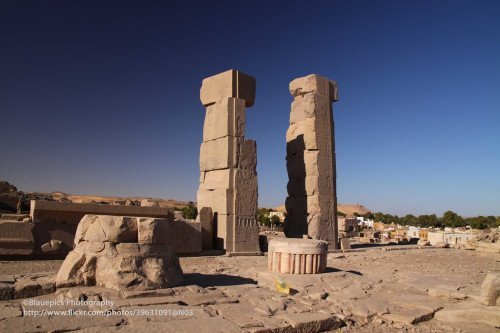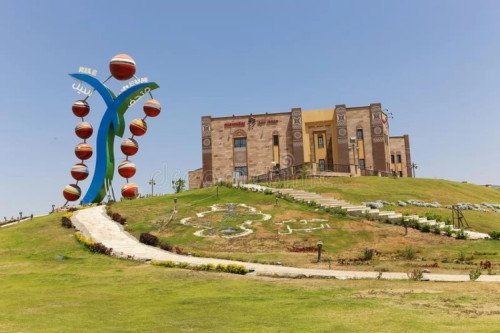Ruins of Abu
Ruins of Abu
The ancient ruins of the ancient city of Abu and the Aswan Museum (partially closed for restoration) are located at the southern tip of Elephantine Island and can be visited with Egypt travel packages. Numbered panels and reconstructed buildings show the island’s history from around 3000 BC to the 14th century AD. The largest building on the site is the partially reconstructed Temple of Khnum (Plate 6, 12 and 13). Built for the flood god during the Old Kingdom, it was used for over 1,500 years before being rebuilt in the Ptolemaic period and can be explored with Egypt tour packages to enjoy more time.
Other attractions include a small 4th Dynasty step pyramid built by Sneferu (2613-2589 BC; father of Khufu, the Great Pyramid), a small Ptolemaic chapel (15) reconstructed from the Kalabsha Temple (now just south of the High Dam), an 18th Dynasty temple (2) built by Hatshepsut (1473-1458 BC) to the goddess Satet, a cemetery of sacred rams (11) believed to be the living incarnation of the god Khnum, and the ruins of a 5th century BC Jewish Aramean colony. All of these can be visited by Egypt Tours, from which you will visit all the places as you were.
The Nilometer of Khnum Temple No. 7 is located under the southern balustrade of the Temple of Khnum. Apart from celestial omens and priestly prophecies in ancient times, only the Nilometer could give a true indication of a good harvest, which you can see on Egypt Day Tours.
Khnum’s Nilometer was built in the 26th Dynasty and has stone steps leading down to a small basin to measure the maximum level of the Nile. When the Nilometer in this southern border town recorded a high water level, it meant a good harvest, which meant more taxes. You should visit it on an All-inclusive Egypt vacations . Another staircase with a scale on the wall leads down to the water from the northern end of the basin.
From under a sycamore tree near the Aswan Museum, which you can visit on Aswan Day Tours, you can descend to the river’s edge to the Nilometer of Satet. Built in the late Ptolemaic or early Roman period and restored in the 19th century, the staircase was roofed and niches in the walls held oil lamps. Look carefully as you descend to the river and on Egypt Budget Tours you can see the names of Roman governors carved on the left wall.
 English
English
 Español
Español
 Chinese
Chinese
 français
français
 português
português
 Italian
Italian
 Russian
Russian
 Czech
Czech
 Deutsch
Deutsch
 Japanese
Japanese









